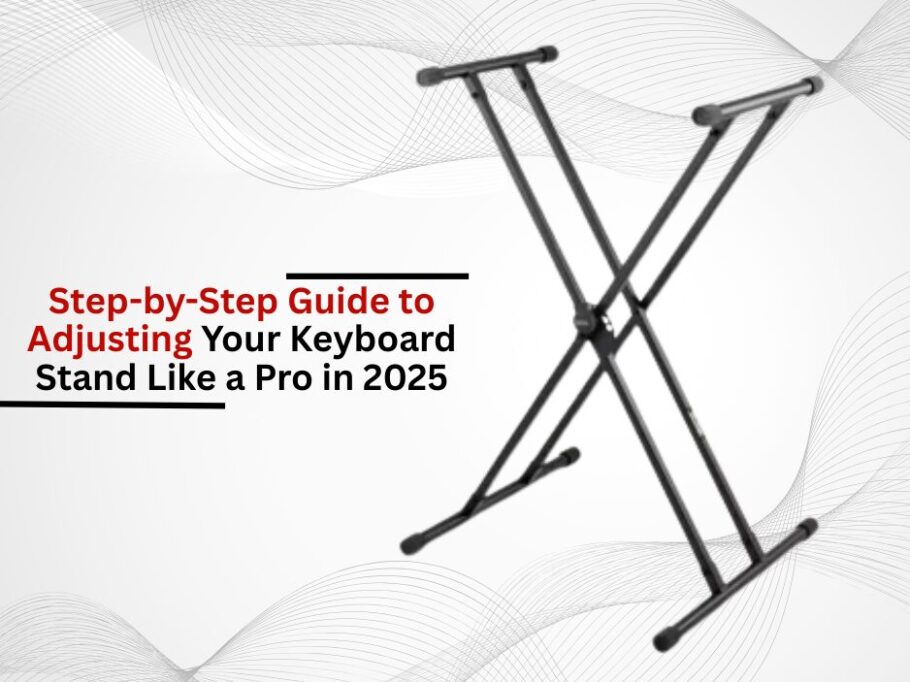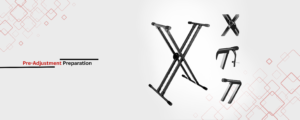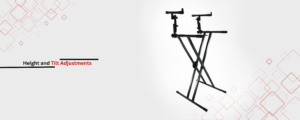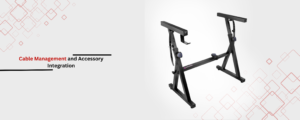In the modern age of technology, keyboard stands have also advanced. Today’s ergonomic instruments and modern stage requirements demand multifunctional tuning with excellent precision to achieve comfort, flexibility, and multi-functionality, as seen with progressive smart automated stands for hybrid setups. In this article, we focus on how you can adjust your stand for optimal ease of movement, stability, and posture.
To know more, read: Best Ergonomic Keyboard Stands Predicted to Dominate in 2025?
Pre-Adjustment Preparation
Manual review of the device:
Review any user manual features, check compatibility with other accessories, limits around weight, and locking features specific to the attached IoT, as all tend to differ by a lot, especially on stands featuring integrated IoT systems. Don’t forget to install any necessary firmware and software updates required to unlock advanced calibration settings.
Tools and other accessories needed:
Feel free to reach out and locate the provided toolkit containing bubble levels, tension screwdrivers, and pads containing anti-slip features. Additionally, depending on the design of the specific stand and its intended use, these items may include clamp-style rigid pod dampers that.
Height and Tilt Modification Options
Defining Maximum Height:
The forearms of an individual playing the keyboard must be level with the floor while sitting or standing; this dictates that the keyboard needs to be set at a specific height. In the case of mounts with memory presets, hydraulic lifts and digital sliders allow for saving height increment settings, which can be easily adjusted during the performance.
Adjusting Tilt Angles:
In most situations, wrist alignment and visibility of synthesizers are enhanced with a slight forward tilt (3 to 5 degrees). It is important to gradually tighten the angling knobs and brackets to avoid over-torquing them. Apps that will be available in 2025 for smart stands make use of lasers to show markers for alignment.
Balancing the Load and Stability
Check the Balance of the Load:
The center of mass for the keyboard should rest on the vertical column or base of the stand. Slender keyboards might need back and front swaying from dual-braced legs or crossbars. Tools like pressure- and load-sensitive mats identify uneven stress points.
Safeguarding Locking Mechanisms:
Wear needed to be checked for the quick-release clamps and threaded bolts. Popular carbon fiber stands in 2025 due to a high weight-strength ratio shift into magnetic locks that audibly snap into place and are placed. Stands that are traditional often require manual tightening using torque-controlled tools.
Cable Management and Accessory Integration
Mounting of Secondary Tiers or Arms:
The ergosystems supports the use of tablet and mixer arms and additional keyboards, which are to be mounted symmetrically for balance. Smart stands with auto-balancing sensors dynamically adjust counterweights to balance, but manual setups require trial-and-error placement.
Organizing power supplies and cables:
Integrated cable channels and magnetic routing clips can eliminate tangles in wires, which helps prevent tripping hazards. For wireless setups, stands with built-in Qi charging pads or USB-C hubs remove cables entirely.
Post-Setup Verification
Adding a Stability Test:
Lateral gentle pressure should be applied to the keyboard to assess side-to-side wobbling. Base extenders or leg levelers may need micro-adjustments for uneven surfaces. Vibration analysis applications are able to measure resonant frequencies over time that may loosen components.
Ergonomic Evaluation:
Comfort can be evaluated after a 15-minute playing session. Optimal height, tilt, or other sub-issues are measured by symptoms in the wrists, shoulders, or lower back. Providing real-time feedback, Smart stands with posture sensors and responds via companion apps, suggesting micro-adjustments.
Maintenance and Future Proofing
Regular Inspections and Lubrication:
Every 6 months the moving parts, such as hydraulic pistons or telescopic legs, should be cleaned and lubricated. For high humidity or outdoors, corrosion-verit sprays should be used.
Change with New Technology:
Stands in 2025 are already with support for firmware updates for new accessories, calibrations, or even AI-tuned holographic display integration. Enrolling in manufacturer update alerts ensures full compatibility with most of the emerging technologies, such as AI-assisted tuning systems.
Conclusions
For 2025, mastery of stand adjustment remains a blend of distinct traditional mechanics and modern tech. With brands like 5 Core, Roland, K&M, and Donner at the forefront, customizable solutions increasing ease and practicality of customizability and improving durability are already integrated. As the stand and instrument merge into one, these brands keep the musicians ahead of the adaptive curve to prepare for future surprises.






